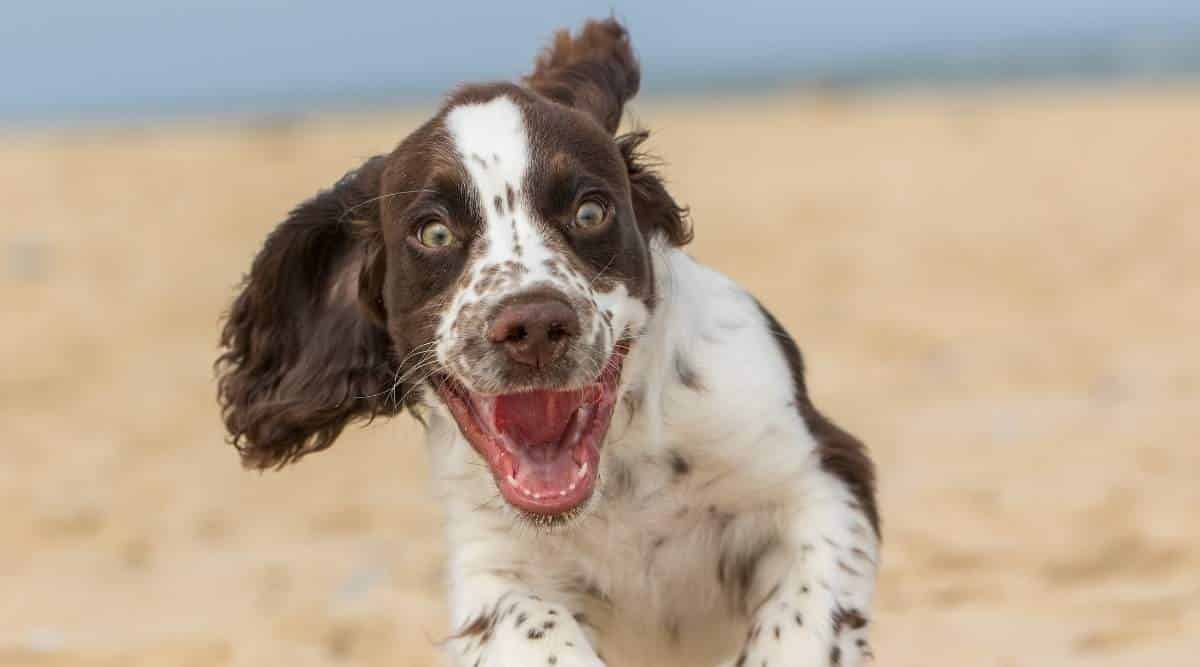Great Pyrenees Dog Breed Information: Facts, Traits, & More
When you purchase through links on our site, we may earn a commission. Here’s how it works.
The Great Pyrenees is one of the most ancient dog breeds in existence. Going back to the Bronze Age, he is one of the original canine companions that’s had a paw in creating many other large dog breeds. He is one of the best canine defenders and will protect his family, estate, flock, or bucket of toys with his life.
This furry looking polar bear lookalike isn’t the perfect breed for everyone though. The Pyrenees can be a very stubborn breed, making them difficult to train. Their larger size can also be a deal-breaker for many families that don’t have space for the breed to roam.
As with all dog breeds, you should fully understand what the Great Pyrenees brings to your family before welcoming one into your home. In this guide, you’ll learn what you can expect from the breed, starting with the ideal family and living situation. You’ll also learn about the breed’s training, grooming, and nutritional needs. Let’s jump in and find out if this gentle giant is the perfect canine companion for your family!
Table of Contents
Breed History
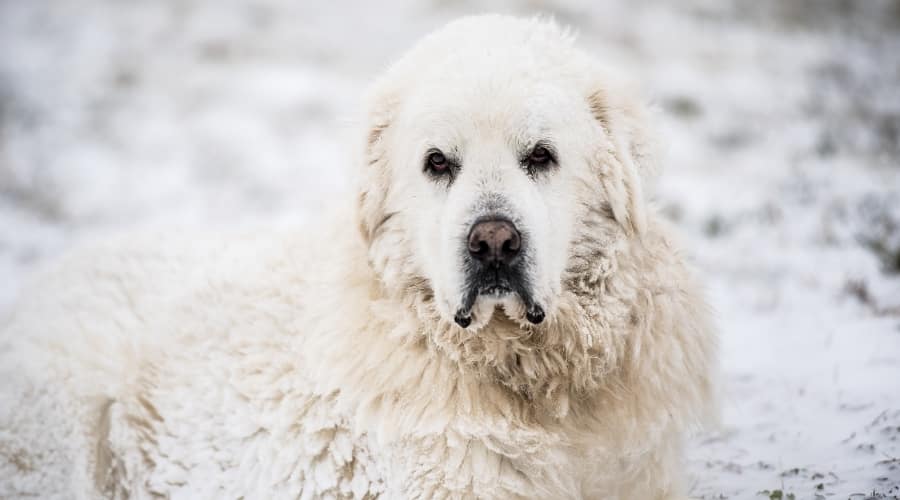
The Great Pyrenees dates back to the Bronze Age. Which, for those of us who didn’t pay attention during history lessons at school, is 1800 – 1000 B.C. We know this because historians have found fossilized Great Pyrenees remains. He is named after the area where his breed was refined and commonly found. This is the Great Pyrenees mountain range that lies between the French and Spanish borders.
The people of the Pyrenees mountain range needed a large dog to protect them, their land, and their flock. And one that could take care of his flock for weeks at a time without the direction of his master. His protection skills are legendary, and he will fight off wolves, bears, and human rustlers with ease. Thankfully, his large size and formidable demeanor meant he rarely had to fight because no one was stupid enough to take him on.
In the 17th century, his legendary defending and docile nature earned him the role of Royal Dog of France. Although he can still be found wandering the lands of chateaux and mountain ranges, he is becoming increasingly popular as a family pet in America. He first came to the US in 1824, when a General imported two fine specimens as a gift for a good friend of his.
Temperament
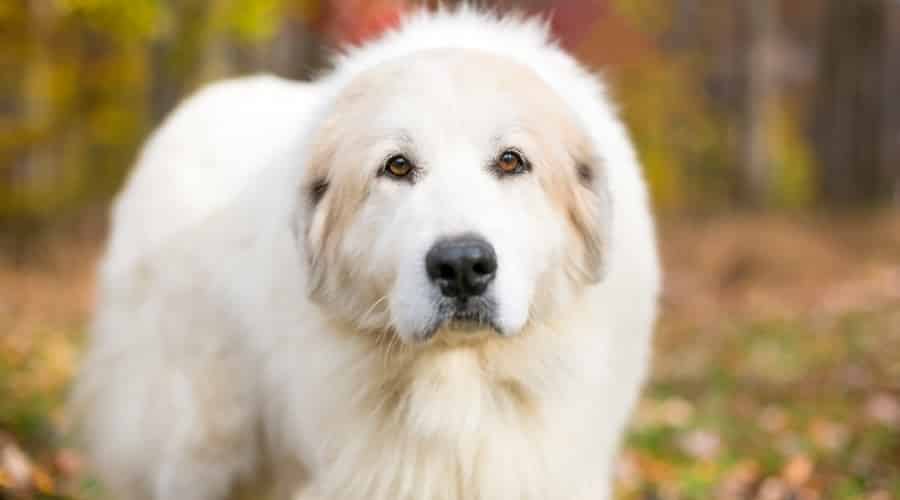
The Great Pyrenees is a natural protector, so if you can be sure about one thing, it’s that he will protect you and your family. And your property, flower pots, and every single blade of grass in your yard. If it’s in his space, he will protect it with his life. This is fantastic news if you are looking for a family guard dog. Not so good if you don’t know how to handle a protectively dominant dog. Only experienced owners should adopt this breed.
His defending nature means that he barks a lot! If you have overly sensitive neighbors or aren’t a fan of loud dogs yourself, this breed is not for you. He has incredible hearing too, and every visitor, be that human or cat, will get barked at. So, don’t be thinking that you can keep your midnight snack to yourself. He prefers the quiet life and will not be impressed with never-ending visitors.
Despite his ability to fight wolves (and win!), he is a very affectionate, gentle giant. Just as long as you aren’t messing with his family. In the family home, he is docile and super chilled. Happy to lay around on the porch all day, keeping watch. Or sitting with you on the sofa or snoozing in bed, as long as he is with you, he doesn’t mind.
He is quite a sensitive pup, too, so he really needs to be homed with a family that can spend most of their time with him. Without his family to protect, he can become very anxious. An anxious Pyrenees is a problematic and destructive dog. So please don’t think he’ll get used to being alone.
He is a proud and dignified pup, who isn’t clumsy or foolish. Some describe him as being a serious dog. If you’re after a goofy canine, this breed is probably not the best choice. But if you are looking for a dependable dog, this breed is a great option. His docility and calm nature make him great with kids despite his large frame and dominant character.
Size & Appearance
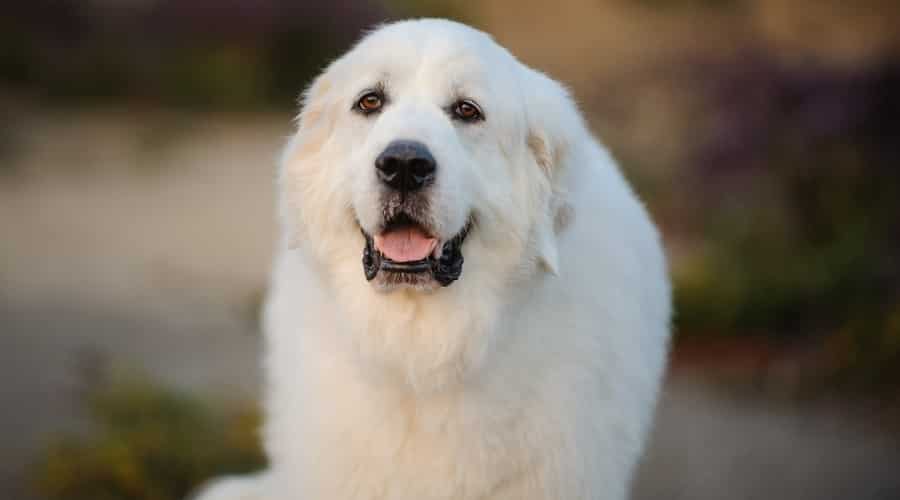
The Great Pyrenees is a large or giant-sized dog, depending on how heavy he is at maturity. Females weigh a minimum of 85 pounds, and males weigh a minimum of 100 pounds. Males can reach weights of 160 pounds. Any dog who weighs over 100 pounds is categorized as a giant-sized dog breed. They also measure between 25 and 32 inches, from paw to shoulder. Again, females tend to be shorter than their male counterparts.
The most commonly used word in the breed standard is elegant. Despite his mighty presence, he is regal and gentle in appearance. Yes, he is large, but his features are delicate, much like a Golden Retriever. In fact, they are actually sometimes mistaken for an English Cream Retriever. His head is wedge-shaped, not large, and his eyes are almond-shaped, always dark in color.
His ears are small to medium in size and V-shaped. The Pyrenees is one of only a few dog breeds to have double dewclaws on each rear leg. He uses them to climb and balance, all part of his protection services to his loved ones.
Coat & Colors
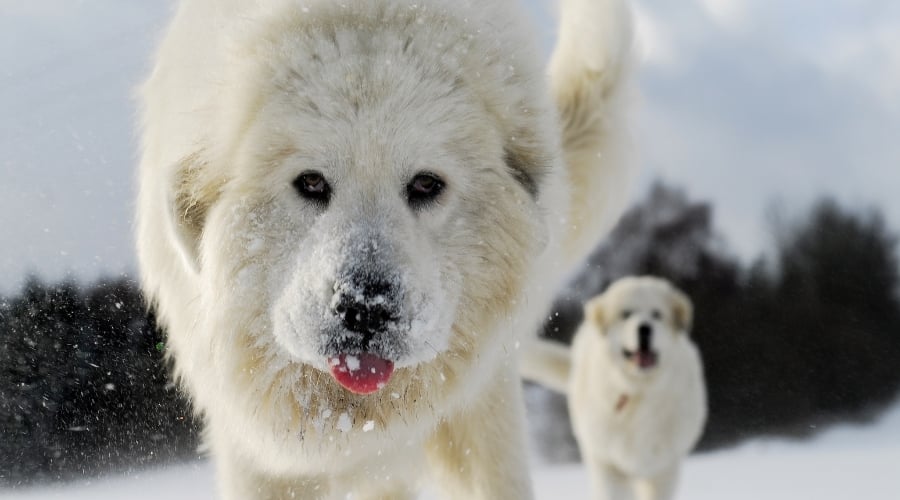
The Great Pyrenees has a weather-resistant double coat. The underlayer is fine but dense and wooly. It is covered by the outercoat, which is thick, long, and flat, which acts to protect the underlayer from wind, rain, snow, and dirt. The fur around the neck is thicker, especially in males. There is also longer hair on the tail, which forms a plume. The hair on the back of his front legs and thigh is feathered, making it look like he is wearing pantaloons.
The breed only has one color choice, and that is white. Although he might have various markings across his body. These markings are described as badger, gray, reddish-brown, or tan markings. But overall, his coat should always be white or creamy in color. If you want a show dog, his markings should not be more than one-third of his body.
Exercise Requirements
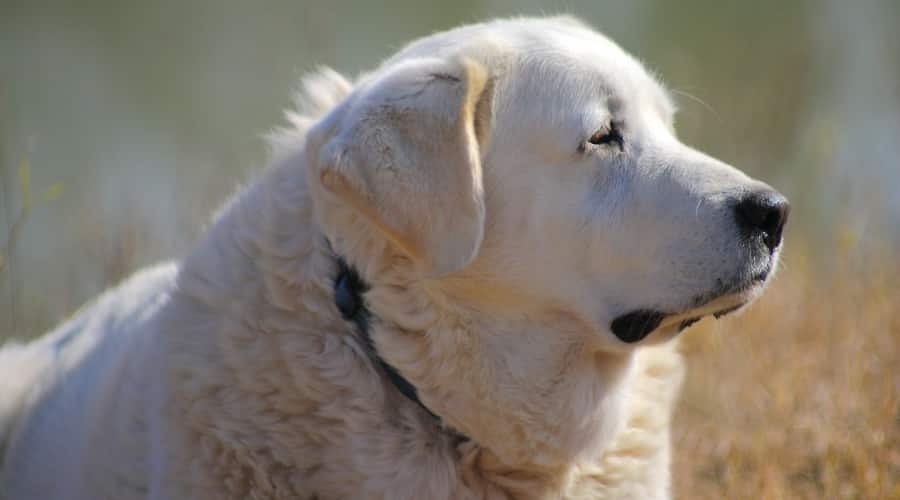
Surprisingly, the Great Pyrenees is a low energy dog who only needs 30 minutes of exercise a day. Sometimes even less! It doesn’t need to be intense. In fact, he doesn’t appreciate intense exercise. Slow and steady wins the race with this breed, and this is a big appeal of his. For those with mobility issues or elderly individuals who love big dogs, he is an ideal companion.
Walks around the block or park are all this pup needs. But equally, if you like long walks, he could happily walk for an hour or more. Just as long as it is cool. This breed does not like hot climates or even slightly warmer climates. He will struggle to exercise in the summer, and he will be a shade chaser. The breed typically does best in cold weather or moderate climates at most.
Although he doesn’t need lots of exercise, he needs a lot of mental stimulation at home to keep his brain engaged. This will not only keep him happy and entertained, but it will also prevent him from becoming bored and destructive. If he can take on a wolf, you can be sure your table legs do not stand a chance against his bored jaws. This means lots of playtime, in the form of fetch, tug of war, or training sessions. And be sure to invest in lots of toys to keep himself entertained.
Living Conditions
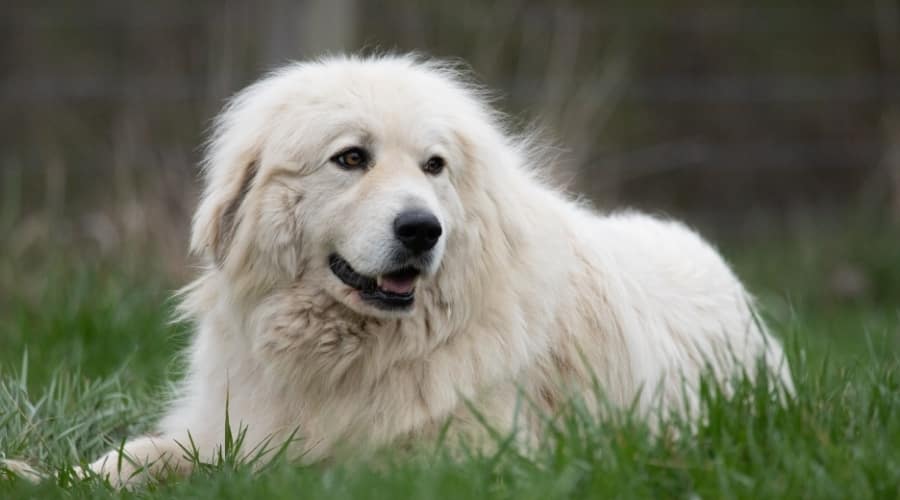
It goes without saying that this large to giant-sized dog needs a large home. Small or cramped homes will drive him mad, considering that he is an outdoorsy mountain doggo. And to be honest, it will probably drive you mad too! Access to a yard is also a necessity for this reason. You will need to ensure that your yard is secured because he will wander off in search of a flock to protect.
This breed is fantastic with children. He sees himself as the serious guardian of all small things, so you can be sure to find him sitting with your kids. And because he is calm and not boisterous, he makes a great canine sibling for children. As with any dog, especially of his size, always supervise dogs and young ones. When it comes to other pets, as long as he is socialized well as a pup, he will get along well with them.
Training
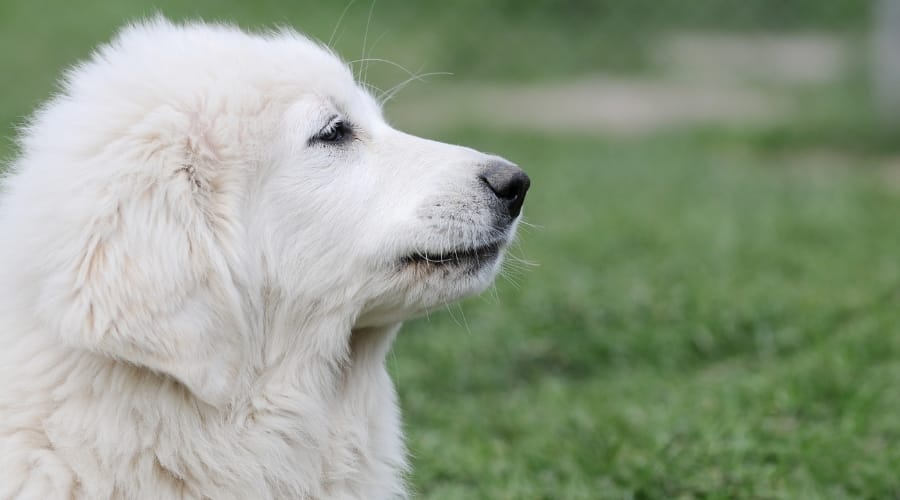
The Great Pyrenees is an independent dog who is very different from the rest. This breed is used to taking care of his flocks for weeks at a time, all alone without the direction of his master. This means that he is used to making his own decisions. The breed is also not known for its intelligence, making the Pyrenees difficult to train. For this reason, you either need to be an experienced dog owner.
When it comes to independent dogs, early training is the key. Although he will probably tilt his head and stare through you when you ask him to sit, you should still try. He might not listen to you, but he will understand that he needs to toe the line if he wants treats and cuddles on the sofa. You never know, your pup might just be one of a kind obedient, and you can show him off.
Positive reinforcement training crucial with this breed. If you shout at him too much, he will literally roll his almond eyes at you and walk off. He is likely to be motivated by yummy treats, so be sure to use these to your advantage. Use this method to leash train this big dog. Because at up to 160 pounds, he needs to know how to walk politely with you.
The Pyrenees is a pleasant and regal pup who is gentle and downright lovely. But, for him to become this dog that we all know and love, he needs to be socialized well as a pup. A great way to do this is to enroll him in puppy obedience classes. Kill two birds with one stone and mix him with other people and dogs. Not only will he learn how to be polite with other dogs, but it will also build his confidence in the face of new experiences.
Health
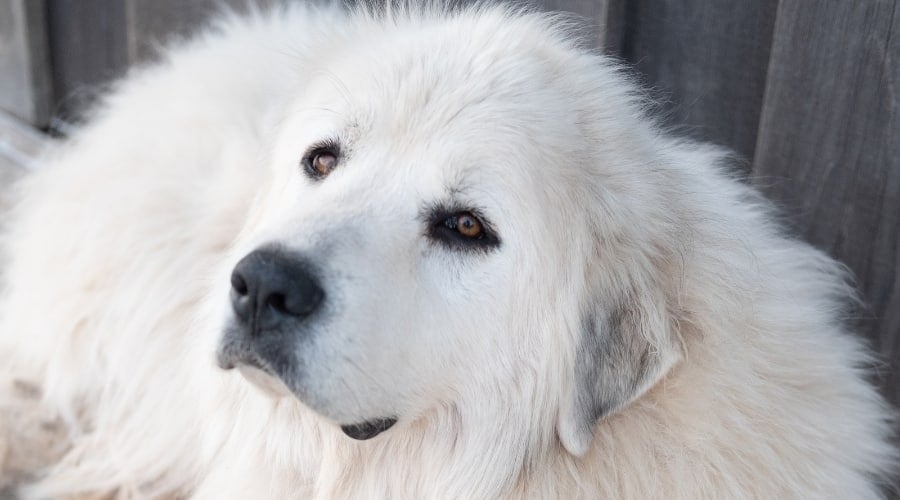
The Great Pyrenees, like many other purebred dogs, is a reasonably healthy dog breed. He is expected to live for around 10 to 12 years. But although this is a decent lifespan for a large to giant-sized dog, his breed is prone to various health concerns. For this reason, it’s imperative that you work with a good quality breeder who will do all they can to produce healthy dogs.
Below is the list of the major concerns that face his breed. Although it isn’t exhaustive, you should research each one so that you know what symptoms to look out for. Early detection and regular health visits are the key to preventing or overcoming illnesses.
Hip and Elbow Dysplasia
This is where the affected joints develop abnormally at an unequal rate. This, in turn, causes painful joints and additional wear and tear. Without treatment, over time, it will lead to mobility issues and arthritis. Exercise intolerance, being unable to climb stairs or stand up smoothly, or whimpering when walking are signs of joint dysplasia. Look for breeders who can offer elbow and hip score certificates.
Patellar Luxation
Patellar is the term for knee, and luxation means where something is floating. A floating, or dislocated, kneecap is not only painful, but it affects his mobility too. Like the symptoms above, exercise intolerance, pain when moving, or kicking his affected leg out for no reason are signs of this condition.
Eye Conditions
The Pyr is prone to various eye concerns, with the two most common being cataracts (in old age) and entropion. Entropion is usually apparent from the age of six months, and it is where the eyelid rolls inwards. Not only is it irritating for your pup, but it can also cause eye injury. If your pup is rubbing his eyes, or they are bloodshot, there is a chance that he has entropion. To prevent injury or blindness, it will need correcting with surgery.
Addison’s Disease
Also known as hypoadrenocorticism, it is a serious condition that sometimes requires daily medication to control. His salt and potassium levels are affected because the adrenal gland does not produce enough adrenal hormones. Symptoms such as lethargy, vomiting, and low appetite are early signs of Addison’s disease. Eventually, it can be detrimental to his cardiac system and can be fatal if left untreated.
Cancer
Recent research shows a higher rate of cancer in the breed compared to other dog breeds. In particular, two types of cancer, known as osteosarcoma (bone cancer) and hemangiosarcoma (blood vessel wall cancer), are the most common. A change in appetite, non-healing wounds, swelling, and lethargy are just a few of cancer symptoms to look out for.
Nutrition
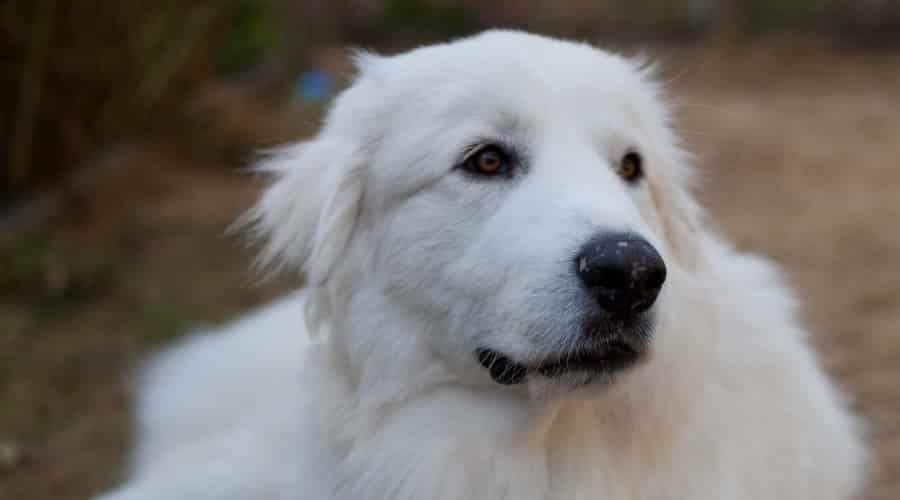
The Great Pyrenees is a big dog who will consume between four to six cups of kibble every day. The amount he eats will be dependent on his size, age, and energy levels. It’s important to follow the package instructions so that you don’t overfeed your pup. His breed is prone to becoming overweight. Not only does he have a slow metabolism, but he is also quite sedentary and does minimal exercise.
Always feed your pup the best nutrition that you can afford. It’s also super important to provide him a high-quality Pyreness kibble designed specifically for large or giant-sized dogs. This is particularly important during the puppy phase as his body develops because it helps to control his rapid bone growth. Which, in turn, can decrease the chances of him experiencing skeletal problems such as joint dysplasia.
A well-balanced diet is important. And despite the need to keep him trim, healthy omega fatty acids are crucial for his well being. Omega 3s and 6s support cognitive and cardiac function, as well as promote a luscious coat. They also help with vitamin and mineral absorption, keeping his immunity strong and nourishing his coat and skin. If that wasn’t enough, omegas also support his joints. Look for ingredients such as fish, meat meals, fish oils, and flaxseed in the ingredients list.
Grooming
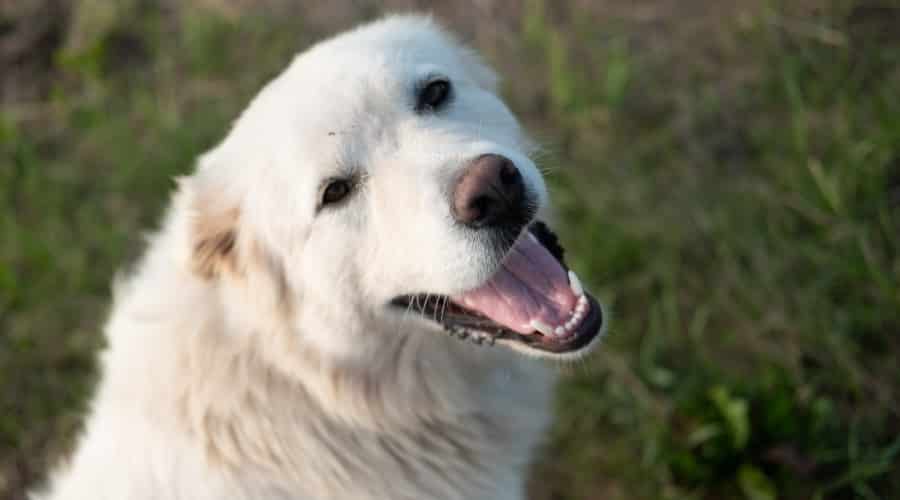
Although the Great Pyrenees has a thick double coat, he has a relatively straight forward grooming regime throughout the year. All he needs is a brush twice a week to remove dead hair, spread his natural coat oils, and prevent tangling. A slicker or a pin brush is the best tool for the job. During the shedding seasons, you will need to step it up and brush him most days. For these few weeks, an undercoat rake or deshedder will help you to manage his fluff.
His weather-resistant coat is great at repelling dirt, which means you only have to bathe him four times a year or so. Unless, of course, he is a show dog, and then you’ll have to keep him bright and clean. Use a concentrated but gentle shampoo that will offer a deep clean but not strip him of his natural coat oils. It’s super important to dry him thoroughly because a damp coat can lead to sore skin and infections.
Brush his teeth at least once a week with a toothpaste designed for doggies. Human toothpaste is toxic to them! Trim his nails as and when he needs it, mainly when you hear them tapping on the floor. When it comes to his double dewclaws, do not remove them. Just keep them as short as possible. They catch easily, causing injuries. Remember that he has blood vessels in his nails, so if you aren’t sure about trimming them yourself, get your vet or groomer to show you how.
Breeders & Puppy Costs
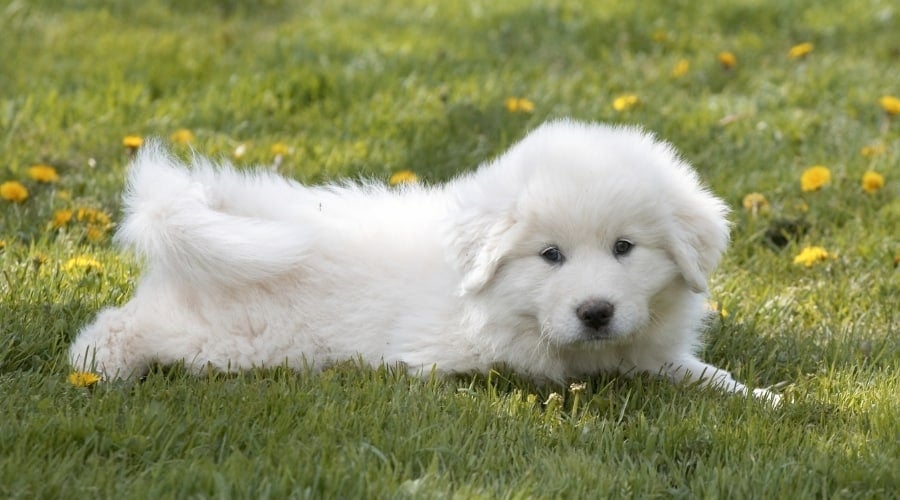
Depending on where you live, a reputable breeder might be hard to find. But traveling is a small price to pay for a healthy pup. You will probably also have to expect waiting lists for expecting litters. But this means that they are focusing on breeding healthy puppies rather than as many as possible. The AKC’s breeder list is a great place to start.
The average price of a purebred puppy from a reputable breeder is approximately $1,500. This pays for healthy pups, medical expenses, and a loving and socialized upbringing. Always look for a breeder willing to meet you at their home and introduce you to the litter and their mum. They must be able to provide you with health certificates and are contactable and pleasant.
If you get a bad feeling about them, or they pressure you to buy a pup in any way. Or refuse you to meet the litter or environment they are being raised, walk away. If the price is much lower than the average price, this is another surefire sign that they are a poor quality breeder. If you want a happy and healthy pup, only work with a top-quality breeder.
When it comes to puppy costs, there are other costs to consider. Setting up your home, making it Pyrenees proof, and buying beds, crates, coats, etc., it all costs money. Plus, this is a giant-sized dog, and giant-sized products cost much more than toy dog products. There are also ongoing costs of looking after a dog, including medical expenses and food, to name just a few. So, before committing to a pup, please be sure that you can financially care for him across his whole lifetime.
Rescues & Shelters
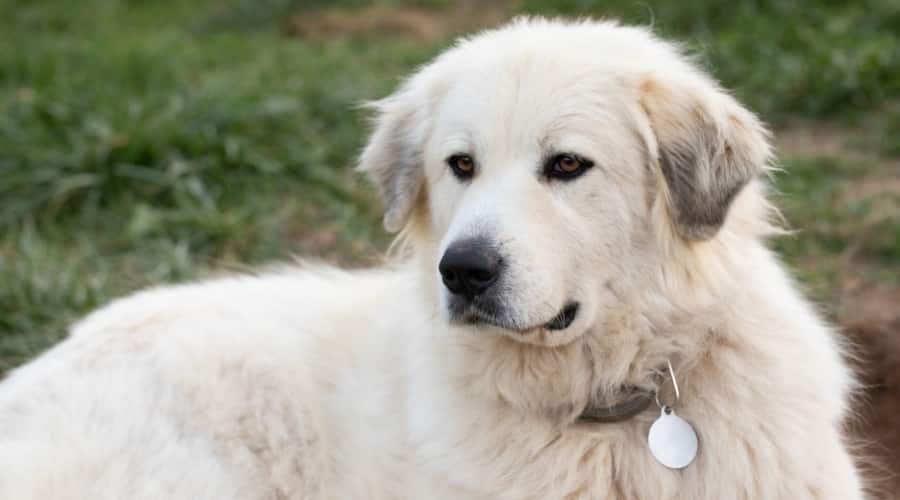
With so many dogs in rescue shelters across America, there is a good chance that there is a Pyrenees out there perfect for you. Head out to your local shelters and speak to the staff there, who can talk you through the adoption process. Adopting a dog is often much cheaper than buying a pup from a breeder.
If this doesn’t prove fruitful, there are many rescue organizations that focus their efforts solely on rehoming this specific breed. The Great Pyrenees Club of America lists many rescue shelters state by state, so this is a great place to start. They also list a wealth of other important information about the breed that you will find helpful. You can also consider a Pyrenees mix, which will increase your chances of finding the right dog.
As Family Pets
- This breed is known for being headstrong and independent.
- The breed is laid back in the home and loves to relax with family.
- He is very affectionate with his loved ones and is a true gentle giant.
- His exercise needs are fairly low.
- The Pyrenees only needs 20 to 30 minutes of exercise every day.
- He needs mental stimulation in the form of play to keep his brain active.
- The Pyrenees is an innately protective dog who will bark at anything.
- He is an independent dog who may not always listen to commands.
- The breed loves to wander and roam.
- This means a secure yard is a must for any owner.
- He needs a large home, but he is happy to live with children and other pets.
- He gets hot very quickly, so his home and yard need to offer plenty of shade.
- The Pyrenees does better with colder climates.
Final Thoughts
The Great Pyrenees is a large to giant-sized dog who needs lots of room in his home. Not only inside, but he also needs access to a yard and fresh air. He craves human company, and he needs an experienced dog owner who knows how to handle independent canine characters. This mountain doggo is relatively laidback and simple to care for. But you do need to make sure that you can meet his specific needs mentioned above.
Hopefully, after reading this breed guide, you are clear on whether this is the perfect dog breed for you, your family, and your lifestyle. If you can offer him what he needs, you can be sure that you are inviting an elegant, loving, and calm doggo into your life. With a hint of protection spice! And tell your kids they are getting a polar bear for a pet, and they might just believe you!



